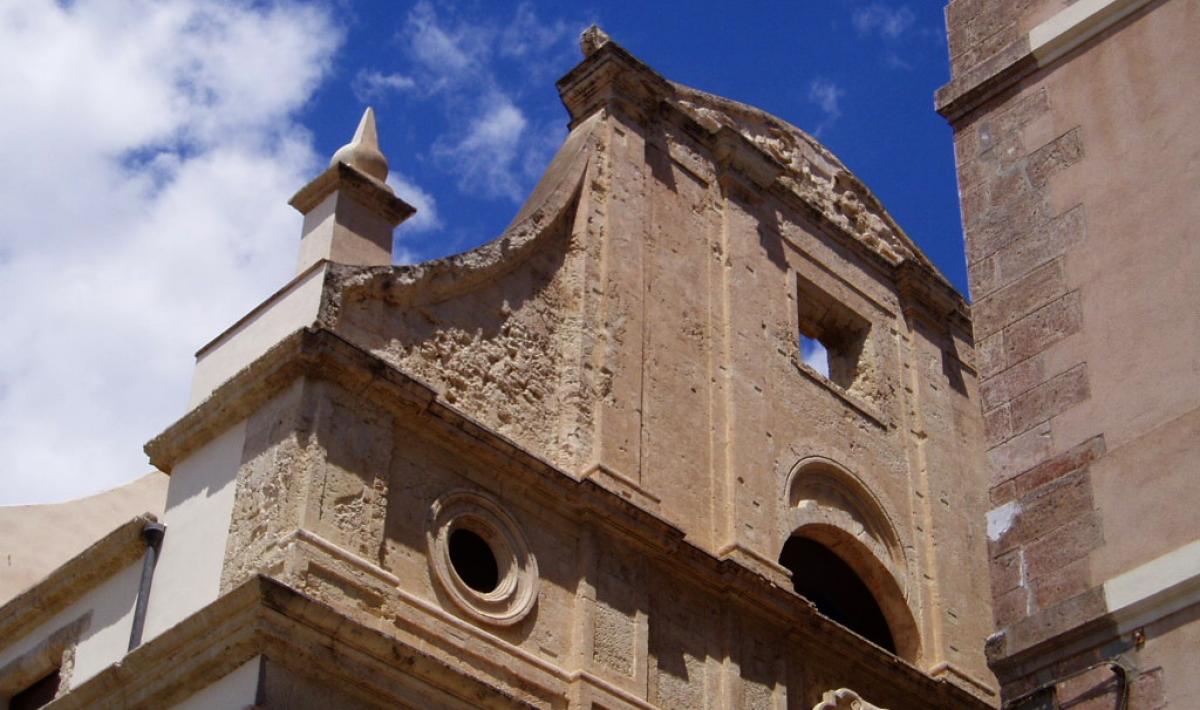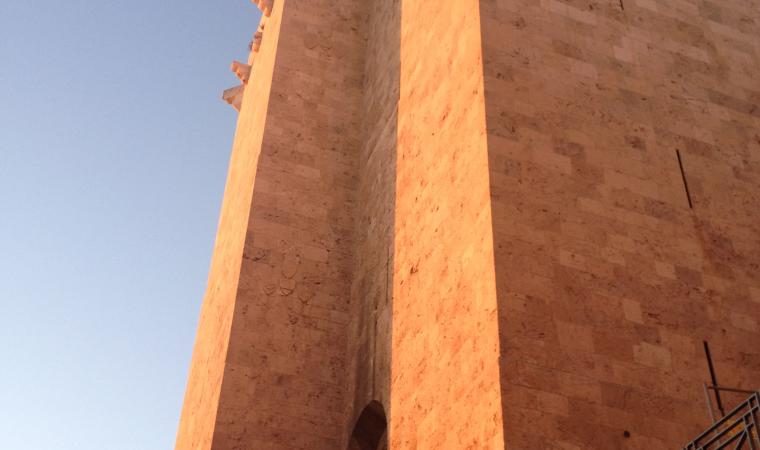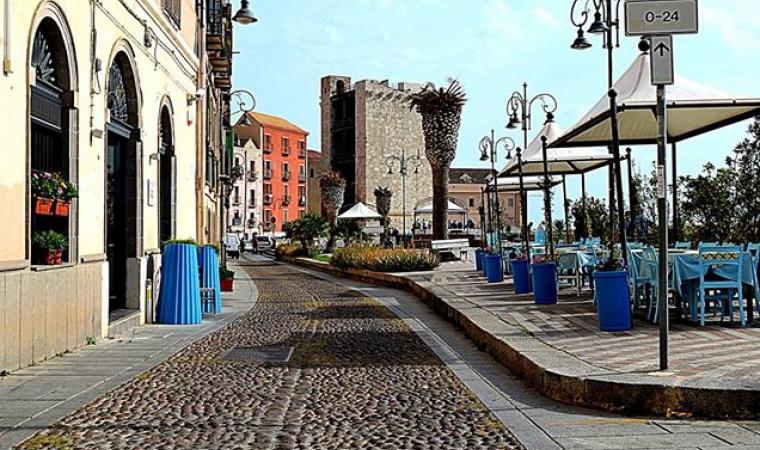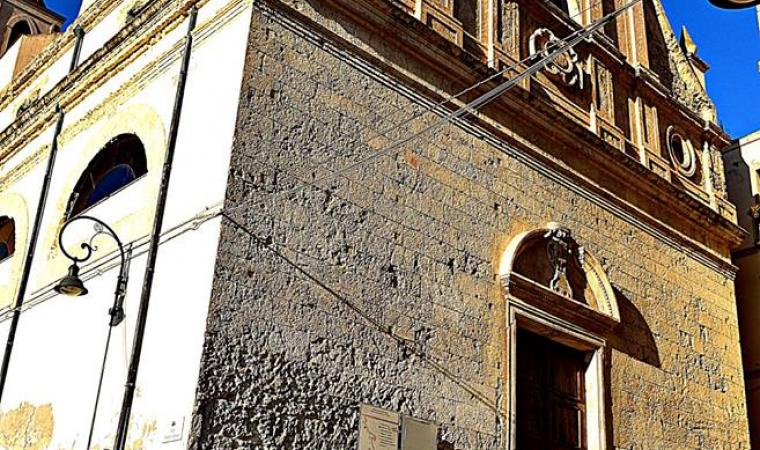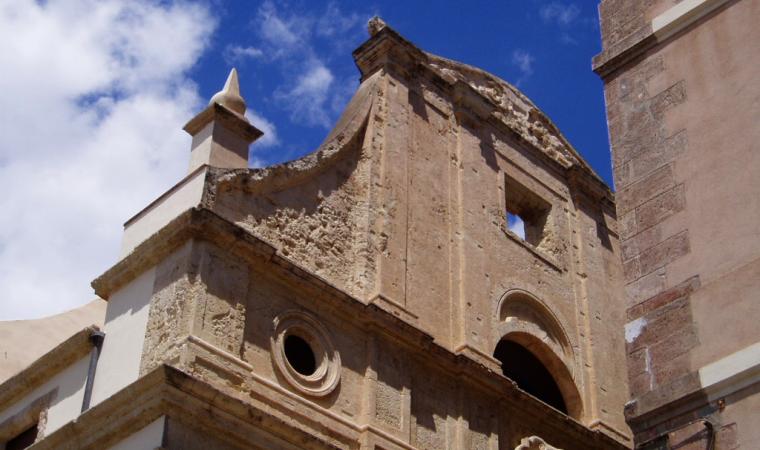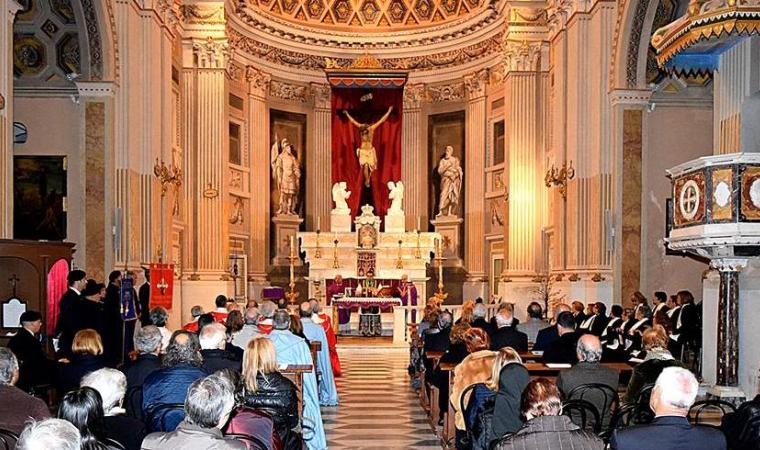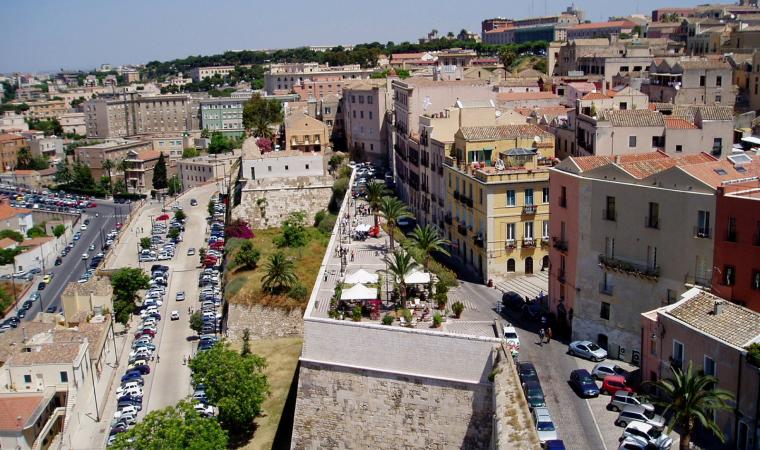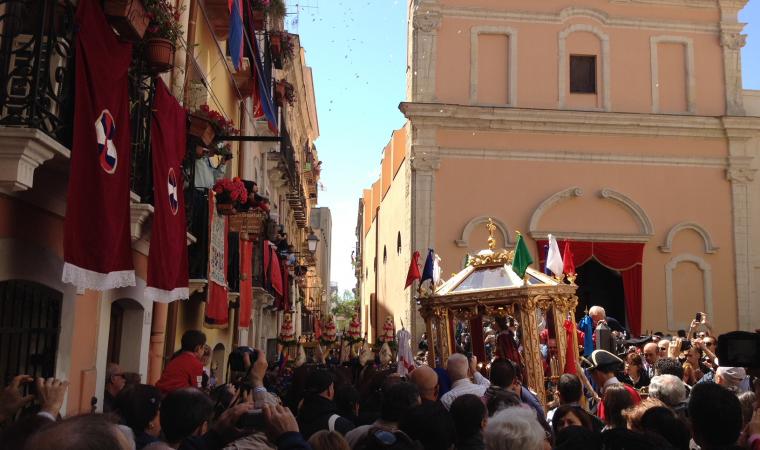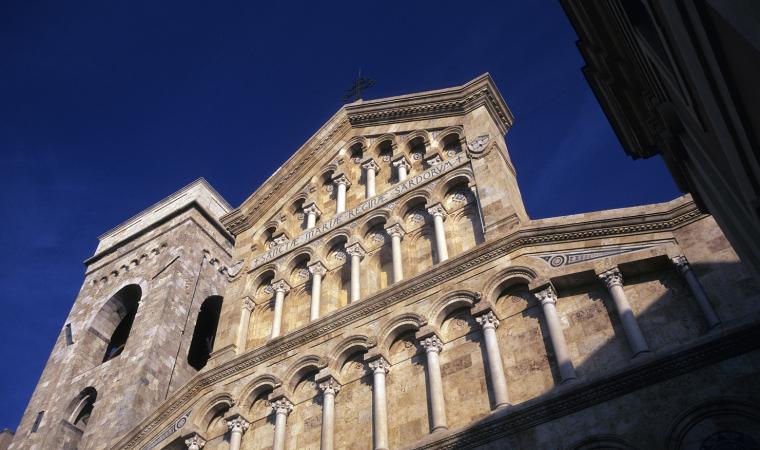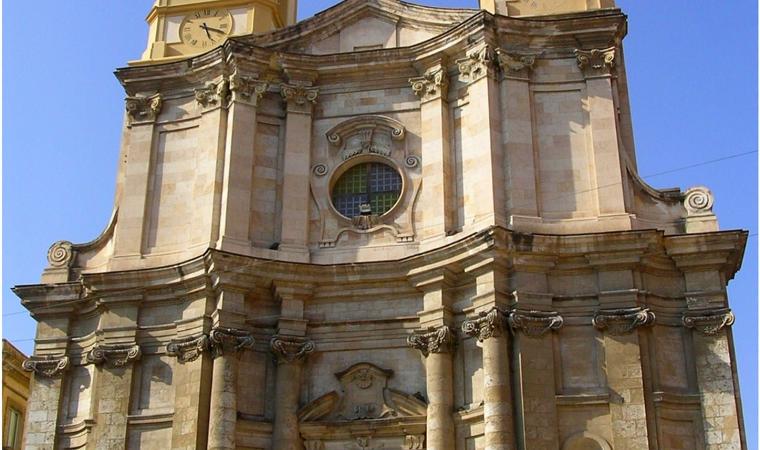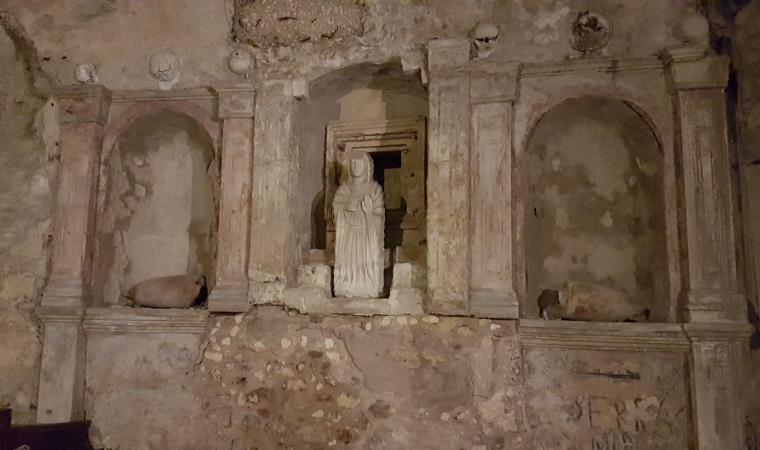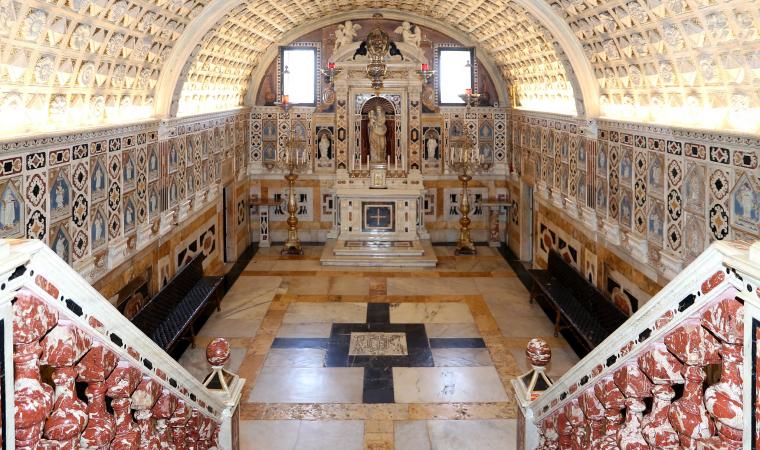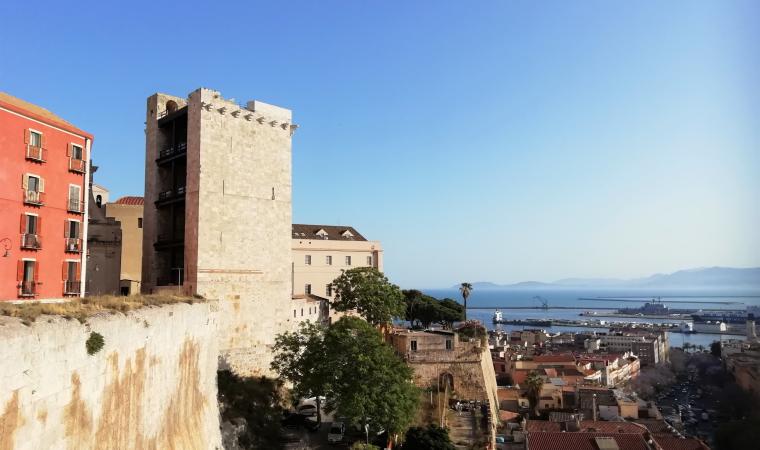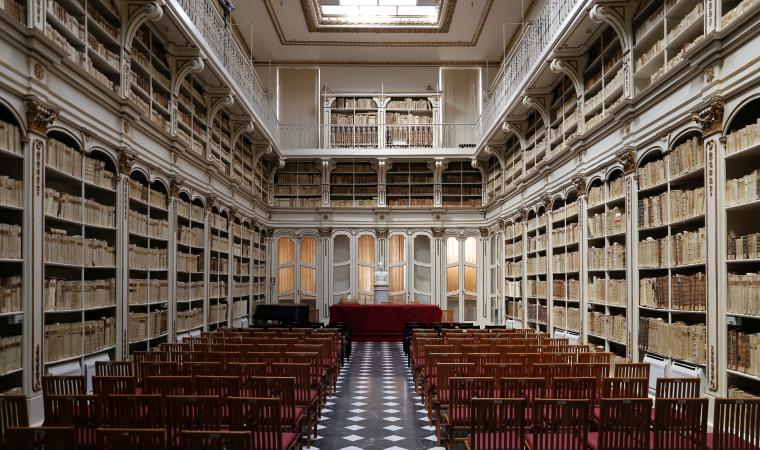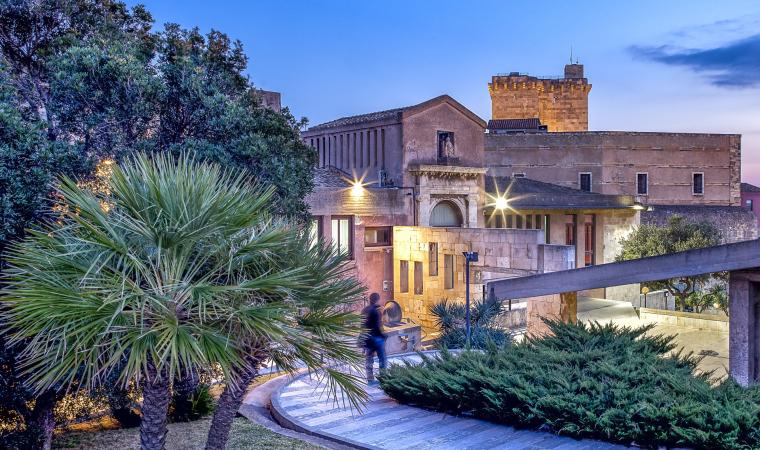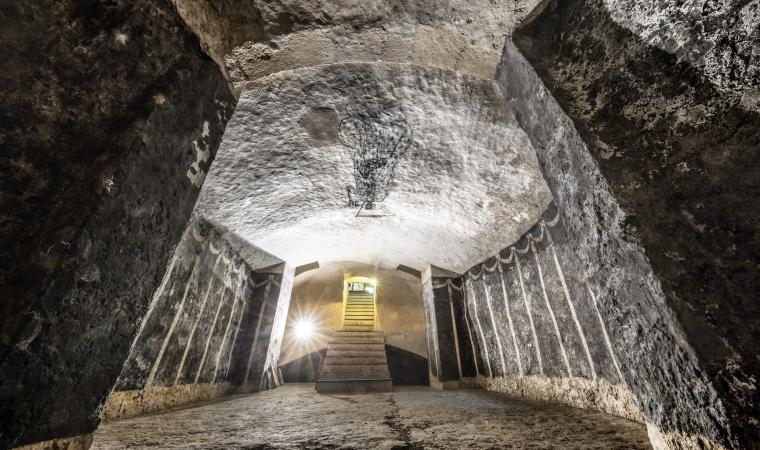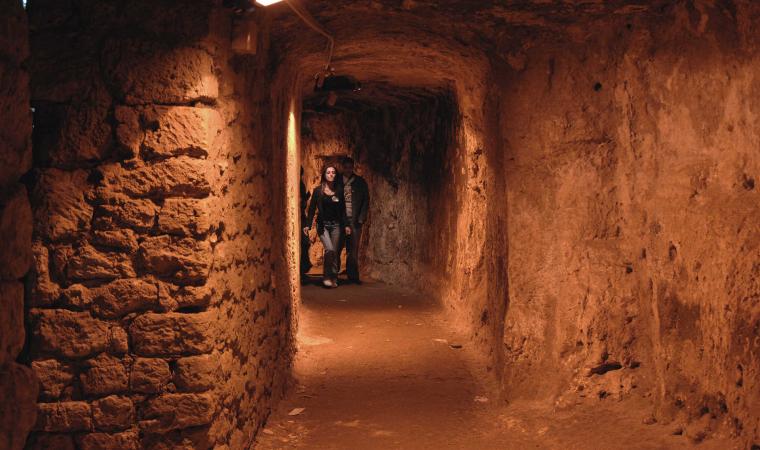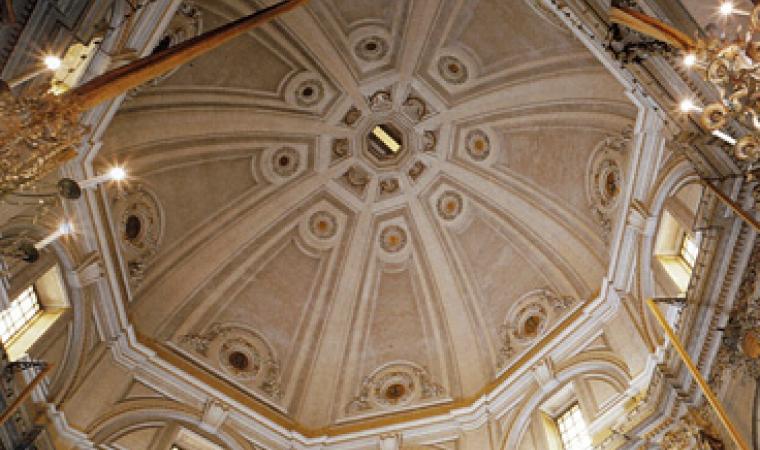This temple is a symbol of the religious and socio-cultural integration of the Castello, the fulcrum of Cagliari, from the 13th and 19th centuries. The Basilica di Santa Croce can be explored whilst strolling through the heart of the city, upon entering into the medieval quarter from the Saint Remy bastion. After crossing the Torre dell’Elefante and going along the Santa Croce bastion in the direction of the Ghetto degli Ebrei, a stretch of a small piazza can be spied, preceded by a few steps and enclosed by the houses of the former Jewish quarter. Here, one faces the monumental façade of the basilica, which was reopened for worship in 2007 after decades of restoration. It is difficult to photograph the entire slender façade, given that one can only take a limited number of steps backward within the churchyard. The feeling of majesty increases once inside, with a single nave that is barrel vaulted and decorated with faux ceiling coffers by Ludovico Crespi.

